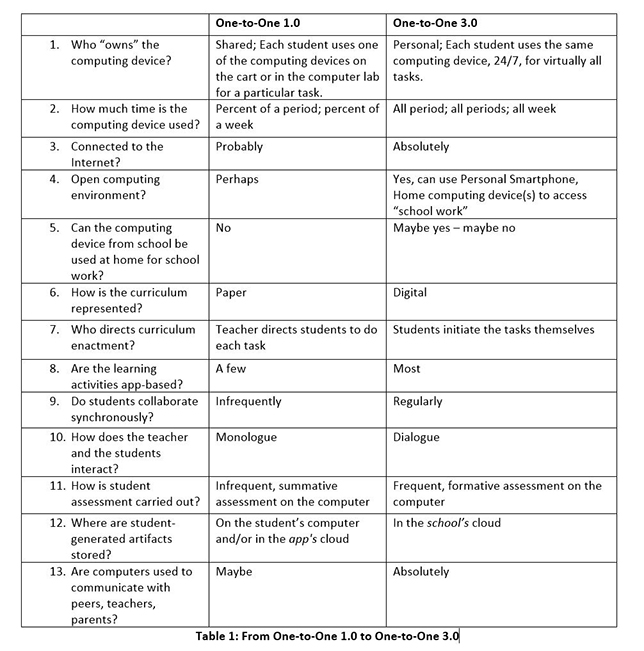Reinventing Curriculum | Blog
Here you'll find analysis and views on technology, policy and curriculum in elementary and secondary education by two outspoken technology advocates, Elliot Soloway and Cathie Norris. Reinventing Curriculum is published twice per month. Below you will also find the archive for Elliot and Cathie's previous blog, Being Mobile.

Five years from now K–12 classrooms will look dramatically different than they do today because of the four trends identified in this week’s blog post. You can take that prediction to the bank!

This week’s blog post looks behind the technology to the policies that make teachers utterly frustrated when trying to use that technology with their students. We tell two, true stories that, without a doubt, will make you groan with frustration. These sorts of frustrators must be addressed if technology is going to have its promised impact.

Sharing computing devices, the hallmark of One-to-One 1.0, rules the K–12 landscape. While the technology industry is on the verge of producing powerful computing devices for the price of a pair of gym shoes, getting all the way to 1-to-1 3.0 in is going to require more than just ready-access to computing devices. In this week’s blog post, then, we lay out the 13 conditions for 1-to-1 3.0.

Due to a number of high profile successes (e.g., beating the world Go champion) recently, Artificial Intelligence technologies have been receiving a great deal of attention by companies and by the press. K–12 doesn’t want to be left out! But, in this week’s blog post we argue that, for good reason, K–12 shouldn’t be looking to AI to solve its problems.
This week’s blog post distills our 30-plus years of working in K–12 classrooms trying, trying, trying to integrate computing devices into those K–12 classrooms. The result: five guidelines. Educators, what’s your take on these five guidelines? Researchers: "Experience is the best teacher, but a fool will learn from no other."
In this week’s blog post, a third grade teacher in a public school provides a clear example of what our blog, "Reinventing Curriculum" is all about. Mr. Gabriel DellaVecchia has used 1-to-1 in an imaginative, productive, and effective manner. What the children in his class accomplished is absolutely inspiring!
While OER marketplaces tend to tout the amount and types of content on offer, we must remind ourselves that content is not curriculum — and it is curriculum that teachers actually want. We go on to describe the life-cycle of a digital lesson — and argue that support for all the life cycle phases is only just beginning to be provided.
In this week’s blogpost we explore the Minnesota Partnership for Collaborative Curriculum, a group of Minnesota educators dedicated to creating and disseminating quality, OER-based curriculum. And we have a Q&A with the founder of SABIER, a nonprofit that provides support services to schools who are adopting OER-based courseware, like that produced by the MPCC.
In this week’s blogpost, we examine a new proclamation from the U.S. Department of Education’s Office of Educational Technology: in addition to everything else educators already do, educators should now carry out rapid cycles of scientifically valid, classroom-based research. Piling more and more onto the backs of K–12 educators can’t be a strategy for effectively moving K–12 public education into the digital age.
The Chromebooks are coming! The Chromebooks are coming! So, what is a K-12 teacher supposed to do with those Chromebooks? In this week’s blog post we review “The Chromebook Classroom”a recently published book by John Sowash. Our opinion? Sowash has hit a homerun!